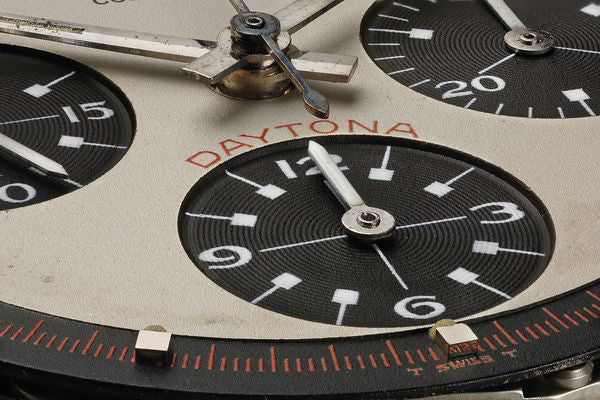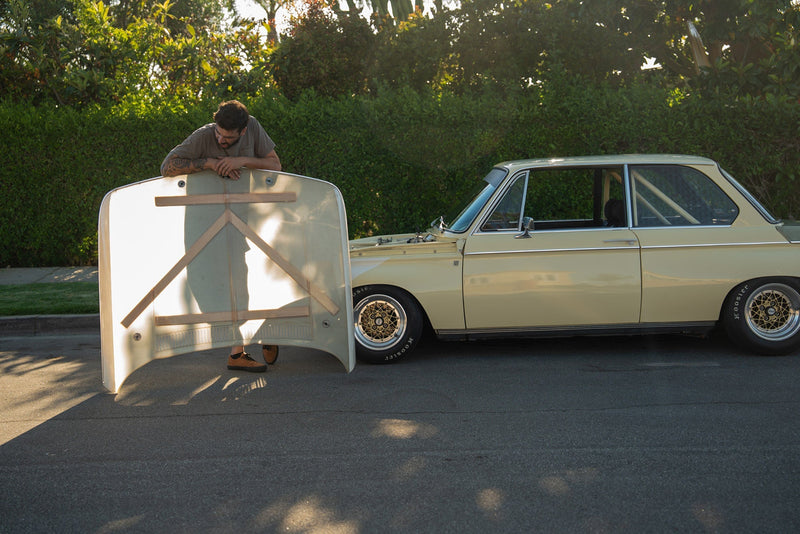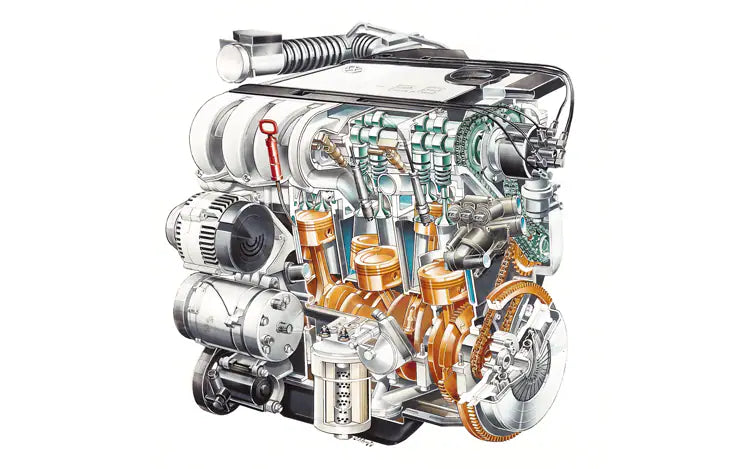Give Emmett Brown and Marty McFly’s DMC keys to a watch nerd and you’d have a whole different film. Instead of all that faffing about with the Johnny-B-Goode-meets-Eddie-van-Halen thing, they’d set the dials to 1963 and start beating down the door of their nearest Rolex dealer to stock up on Paul Newman Daytonas.
If you’ve missed the recent fuss about Paul Newman’s very own Rolex Daytona wristwatch selling for nearly $18m, you must be hiding in a particularly dark inspection pit. By this point and on this site no less, you’re likely to have read all about the engraving on the caseback, and about Newman passing the watch, seemingly on a whim because he didn’t have one, to his daughter’s boyfriend as they restored the old treehouse in Connecticut.


You might not have realized that, originally, the ref. 6239 Daytona, the “Paul Newman,” was a the Ford Edsel of watches. A complete sales flop.
Back in 1963 when the Daytona first shipped out of Geneva, Rolex dealers struggled to sell them. In fact, the ref. 6239 was the cheapest Daytona Rolex made at the time, yet they still hung around on the shelves longer than canned cockroach soup. If you’d put down your Gibson for long enough, Marty, you could have had one for way less than $300 even; dealers often had to discount them to sell them. People simply preferred the standard dialed watches.
So why the rocketlike ascent from dealer dud to—without exception—the most expensive standard watch ever sold at auction? It’s quite a puzzle, even given Newman’s fame. It certainly isn’t the stuff on the inside that’s worth the staggering figure. And to give credence to the value inherent in such things, the last watch that sold for anywhere near this sort of money was a one-off, extraordinarily complicated solid gold Patek Philippe.
Watch collectors get excited about movements, but there is nothing remarkable or even rare about the movement ticking away inside the Newman’s case. The ref. 6239 was powered by a standard, 17 jewel Valjoux calibre 722, with a balance running at a lowly 18,000 beats per hour. Of course you had to wind it yourself every day, no automatic system here.
If you’d taken the trouble to open the caseback on a lowly Harvard chronograph made by the West End Watch Co., you’d have found the very same movement. Likewise, near as dammit, in the contemporary Heuer Carrera, for under $200. The point is that the Daytona was far from the only watch with the Valjoux under the hood. If you’re a vintage collector, rummage in your watch box and there’s a good chance you’ll find something running a Valjoux 72X series movement.



More basic makers like Eterna, Longines, Wakmann; all produced watches built around the Valjoux 72X series. This isn’t to say it’s anything but a fine, accurate, and robust motor, but to borrow an analogy, it’s far from the exotic heights of Lampredi V12-style rarity.
The case itself was unremarkable too; stainless steel, not gold. Just a tachymetre scale around the bezel and pump pushers for the chronometer. The crystal was cheap, serviceable plexiglass. It wouldn’t shatter like sapphire, and you could even polish out the scratches picked up from tweaking your carbs.
This was a functional tool of a watch, never destined to be a collectible you could say. Back in the 1960s, it was just one of the other watches Rolex were known for making then. Waterproof Submariners for divers; everything-proof Explorers for, well, explorers; antimagnetic Milgausses for engineers; and chronograph Daytonas for racing drivers.
So, had you been standing outside our mythical Rolex dealer in October 1963, you’d be forgiven for passing over the Daytona just like everyone else. And even as late as the 1980s you could have snaffled a ref. 6239 Newman Daytona for under $4,000.
And, it’s probably worth pointing out, to further democratize the watch, that the ref.6239 is far from the only Newman Daytona. That’s because the term refers specifically to the dial rather than the watch as a whole. You can spot a Newman by the art deco numbers on the crosshair sub-dials, the tiny squares on the five-minute marks on the chronograph sub-dials, and the contrast between the sub-dials and the main dial.

Here’s where we start to see some real cases for value besides tacit celebrity endorsement. Made by Rolex’s dial suppliers at Singer, the value of a Newman is all in the dial. You’ll find Newman dials on refs. 6240 (rarer than an honest politician), 6241, 6262, 6264, 6265, and 6263.
Before attempting to explain what happened to first hurl the Daytona into the watch world’s limelight, you need to understand something about, let’s call it, Watchworld. It is, in absolutely no sense of the word, a rational place. It’s the place where a bit of red writing on the dial of a Rolex Submariner lifts the price from $6,000 to around more than five times that. A bit of white writing (specifically the word “Comex”) is even more powerful, and it can turn a $6,000 watch into a $132,000 collectors’ item. A cracked, “tropical” dial caused by a manufacturing fault sees a similarly irrational value hike.
If watch enthusiasts were rational, the place simply wouldn’t exist because we’d all be wearing ultra accurate, pennywise and reliable Casio F-91w’s or using our iPhones.
That’s why nobody really knows why these Daytonas have gone stratospheric, although plenty of people will assure you they do. There are few rational reasons behind an ascent, but it’s hard to pin a rise of this size on one thing. But what we do know is that towards the end of the 1980s, this dog got itself a pedigree, and a new name.


The stack of photographs showing Newman wearing his ref. 6239, particularly that shot by Douglas Kirkland, was the christening. The ref. 6239 quickly became known as The Paul Newman. Collectors love a Rolex with a name, so maybe this was really the whole reason; you’ll find BLNRs, Hulks, Gilts, Rootbeers, and Pepsis amongst other names affectionately given to certain pieces. But the association with racer and film star Newman propelled the ref. 6239 to a different level than any of those.
By the early 2000s, Newmans had leapt from sub $10,000 to $40,000 at auction. As the decade was drawing to a close, they’d risen to nearly $70,000. From there, the line on the graph is like looking up at the side of Mont Blanc. The other early Daytona references have been dragged up the slopes with it, but none has got anywhere near the Newman summit.
Funny enough, despite their common presence on untouched shelf space, now there’s intrinsic rarity in these watches. That’s because the singer-dial watches didn’t sell, and Rolex made relatively few of them to meet the relatively small demand. Collectors believe around only 2,000 were produced. Interestingly enough, whatever the true number may be, there are rather more Newmans on wrists and in watchboxes than ever were brought into existence in Geneva. Because the dial makes the watch, the unscrupulous but skilled among us can take a standard Daytona and graft on a Newman dial. They’re far from being the most-faked Rolex (that dubious prize probably goes to the Datejust or the Sub), but the rewards for successfully counterfeiting one are huge.


And that’s what makes Newman’s very own Newman even more special. Provenance does not come any better than this, but having a few fakes around doesn’t hurt the value of the real thing that’s provably so. The contemporary photographs, the engraving on the back, the family link and that wonderful story about Newman himself simply giving the watch away. The watch that auctioneer extraordinaire Aurel Bacs declared is “history now” is the very peak of vintage Rolex collecting. Yes, the new owner has a beautiful, historic watch as well as a rather emptier bank account, nut what he or she has really bought with The Newman Newman more than anything it’s made of is its perfect story.
Images courtesy of: Phillips, Paul Newman, James Cox, Japanese Nostalgic Car, Robert Gabriel/Wired, rolexpassionreport.com, watchesandart.com



















































